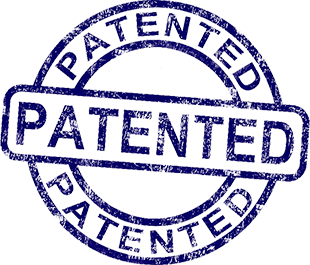In the world of literature, the magic of a book begins long before the first page is turned. It starts with the book bindings—the delicate yet robust craft that holds stories, knowledge, and art together. Much more than simple covers, book bindings are a blend of artistry, technology, and history, shaping how readers experience content while preserving it for generations.
Understanding Book Bindings: More Than Just a Cover
At its core, book binding is the process of assembling the written or printed pages into a single volume and securing them with a protective cover. But this straightforward definition belies the complexity and tradition behind the practice. From ancient hand-stitched manuscripts to modern industrial techniques, the evolution of book bindings mirrors the cultural shifts and technological advances of human civilization.
Today, book bindings serve a dual purpose: enhancing durability and amplifying aesthetic appeal. They protect pages from wear and environmental damage, all while providing a tactile and visual invitation to readers. Whether it’s a leather-bound classic or a sleek paperback, the binding influences how a book is perceived and handled.
Types of Book Bindings and Their Unique Characteristics
Exploring the various types of book bindings reveals a fascinating spectrum of methods and materials. Each type caters to different needs, budgets, and styles, offering a unique reader experience. Below is a concise comparison:
| Binding Type | Description | Durability | Cost | Ideal Use |
|---|---|---|---|---|
| Hardcover (Case Binding) | Pages sewn and glued into a rigid cover, often with a dust jacket. | High | Expensive | Collectible books, textbooks, and premium editions. |
| Paperback (Perfect Binding) | Pages glued directly to a flexible cover. | Moderate | Affordable | Mass-market books, novels, and magazines. |
| Saddle Stitching | Pages folded and stapled through the fold line. | Low | Very affordable | Booklets, pamphlets, and short catalogs. |
| Spiral Binding | Pages punched and held together by a wire or plastic coil. | Moderate | Affordable | Manuals, cookbooks, and notebooks. |
| Coptic Binding | Hand-sewn binding visible along the spine, allowing books to lie flat. | High | Variable (often artisanal) | Art books, journals, and unique handcrafted editions. |
The Craftsmanship Behind Book Bindings
The true beauty of book bindings lies in the craftsmanship. Skilled bookbinders combine precision and creativity to produce volumes that are both functional and beautiful. Techniques such as hand-sewing, embossing, and gold leaf stamping elevate simple books to art objects. This artisanal touch imbues books with personality and a sense of heritage.
Moreover, selecting materials is a nuanced art. Fine leather, cloth, and acid-free papers ensure longevity, while innovative synthetic fabrics bring durability and sustainability into the mix. The choice of glue, thread, and cover material affects not only the book’s lifespan but also its tactile experience.
Why Book Bindings Matter in the Digital Age
In an era dominated by digital content, the significance of quality book bindings is often overlooked. Yet, physical books remain cherished for their sensory richness and permanence. A beautifully bound book invites readers to slow down, savor the texture of the pages, and enjoy the ritual of reading—a tactile experience no e-reader can replicate.
Furthermore, well-crafted book bindings contribute to the preservation of cultural heritage. Libraries, collectors, and institutions rely on superior binding techniques to ensure that timeless works endure. The resilience of a hardcover, for instance, protects treasured volumes against the wear of time and handling.
Choosing the Right Binding for Your Project
Whether you’re a self-publisher, a collector, or simply an enthusiast, understanding book bindings is crucial. Consider these questions to guide your choice:
- What is the intended lifespan of the book?
- Who is the target audience?
- What budget constraints exist?
- How important is the aesthetic versus functionality?
Answering these can steer you toward the perfect binding type, balancing cost, durability, and style. For instance, a hardcover might suit a literary classic meant for display, while perfect binding could suffice for a contemporary novel.
Innovations and Trends in Book Binding
Book bindings continue to evolve, embracing both tradition and innovation. Eco-friendly materials and sustainable practices are gaining traction, responding to environmental concerns. Digital printing technologies allow for personalized and limited editions, blending mass production with bespoke qualities.
Artists and designers also push boundaries, experimenting with unconventional materials and forms. The resurgence of artisan bookbinding reflects a broader cultural appreciation for craftsmanship and slow, mindful consumption.
Final Thoughts: The Enduring Allure of Book Bindings
Book bindings are the unsung heroes of the literary world. They safeguard the stories we treasure, enhance our reading experience, and connect us to a rich history of human creativity. Next time you hold a book, take a moment to appreciate the binding—the quiet masterpiece that binds not just pages, but generations.
If you want to dive deeper into the fascinating world of bookbinding, explore this comprehensive guide on book bindings for expert insights and detailed techniques.
How do you connect with your favorite books? Is it the story, the scent of the pages, or the feel of the binding? Share your thoughts and experiences, and let’s celebrate the timeless art of bookbinding together.

